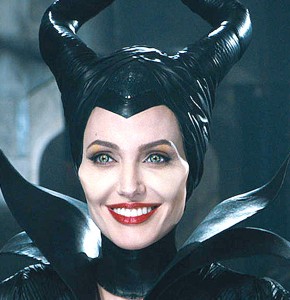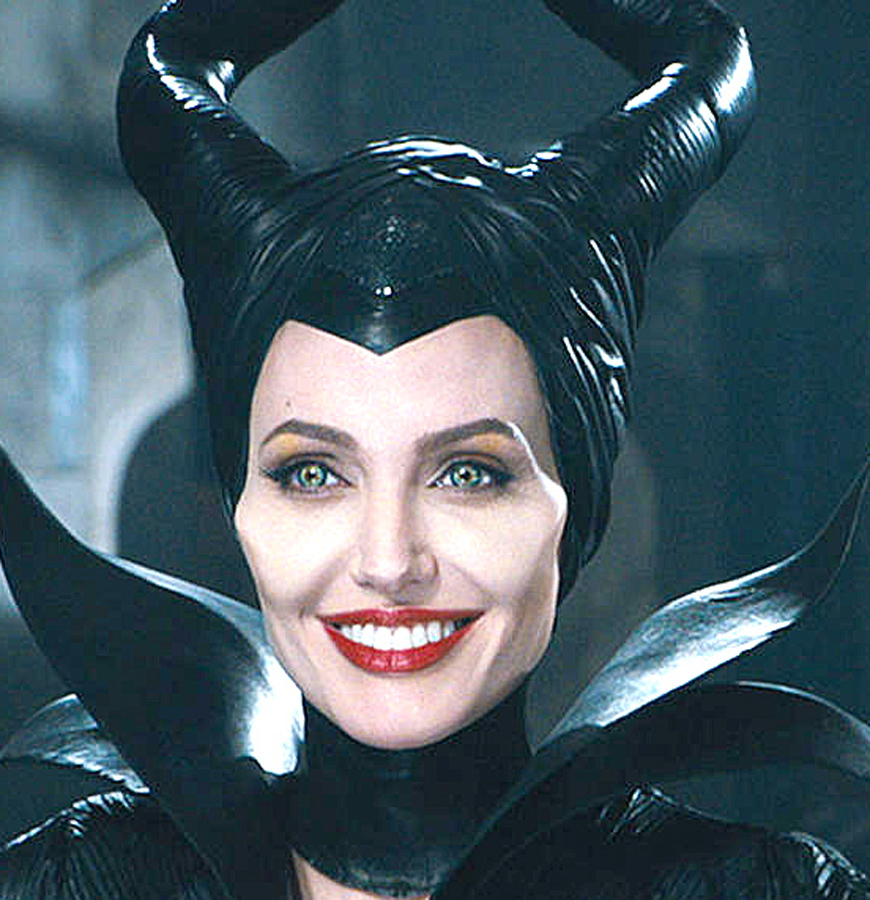Maleficent revamps one of Disney’s greatest villains
From Snow White’s vainglorious Evil Queen to 101 Dalmatians’ felonious fur fetishist Cruella de Vil to Ursula the show-tune-belting sea witch in The Little Mermaid, Disney has conjured up some of the most iconic female villains in cinema history. For the better part of eight decades, these licentious ladies and murderous mademoiselles have schemed, stolen and shape-shifted their way into the darkest corners of our hearts.

Black Magic Woman · Robert Stromberg’s Maleficent is the latest attempt to provide a memorable villain with a sympathetic back-story. – Photo courtesy of Walt Disney Pictures
During that time, however, one she-devil has held dominion over all: Maleficent, the spiteful sorceress from Walt Disney’s 1959 adaptation of Sleeping Beauty. Now, 55 years later, the self-proclaimed Mistress of All Evil is finally getting to tell her side of the story thanks to Angelina Jolie and Robert Stromberg’s grim-looking fantasy adventure Maleficent, scheduled for release this Friday.
Dressed from head to toe in billowing robes of black and purple and crowned in her signature horned headdress, Maleficent has become one of the most enduring and popular villains in the Disney stable. In addition to Marc Davis’ striking character design and the deliciously wicked voice of the great Eleanor Audley, the same actress who lent her sinister pipes to the sadistic stepmother Lady Tremaine in Cinderella, the dark fairy also boasts one of the most frighteningly straightforward motivations in all of fiction: her entire rationale for cursing the innocent Princess Aurora with the promise of death-like slumber and plunging an entire kingdom into anarchy and despair stems from a perceived slight over not being invited to the young girl’s christening. How’s that for holding a grudge?
The 1959 film has had an indelible impact on generations of impressionable children, including a young Jolie, who reportedly counts Maleficent as her favorite Disney character. With her imperious cheekbones, withering stare and glamorous physicality, the 38-year-old actress certainly seems like an ideal fit for the role. Early screenshots showing her in full costume generated a great deal of excitement on Twitter and the blogosphere, as did a 90-second trailer that aired during the Grammys last January.
The trailer, which featured a quietly menacing cover of the original film’s wistful anthem “Once Upon a Dream” sung by funereal songbird Lana Del Rey (who was handpicked by Jolie to contribute to the soundtrack), made the new movie’s revisionist intentions abundantly clear: the fairy tale version of Sleeping Beauty we grew up with is little more than an abridged morality play, one that barely scratches the surface of a darker, infinitely more complex saga of betrayal and revenge surrounding Maleficent and Aurora’s father King Stefan, played by District 9 star Sharlto Copley, who appears much less benevolent this time around. It’s an interesting premise all right, if hardly an original one.
Whether we’re talking about heroes or villains, “secret origins” are nothing new. The Broadway play Wicked recast the Wicked Witch of the West as a misunderstood victim of prejudice, while George Lucas’ Star Wars prequels revealed the fearsome Darth Vader as a tragic figure who is manipulated into sacrificing his humanity in order to save his wife and unborn children. The new Amazing Spider-Man series initially justified its existence by promising to tell us “the untold story” behind the disappearance of Peter Parker’s parents, but the answer ultimately cheapened the character’s origin by making his superpowers a genetic inheritance instead of a simple twist of fate.
When it comes to great villains, less is often more. Saddling a first-class antagonist with an unnecessary or hastily constructed back-story can rob them of their mystique, turning them from villain to victim in the space of a few ham-fisted flashbacks. Analyze a fascinating character too closely and you risk diluting what made them so fascinating to begin with.
One of the best recent examples is Hannibal Lecter. Thomas Harris, the author responsible for immortalizing the gentleman cannibal’s grisly exploits in Red Dragon and The Silence of the Lambs, ultimately went too far in delving into Dr. Lecter’s traumatic past in Hannibal Rising, an ill-advised prequel that risked turning the enigmatic horror icon into just another vigilante with blood in his eyes. Thankfully the TV series starring Danish actor Mads Mikkelsen, which just finished its second season, has made major inroads in restoring the character to his former inscrutable glory, even adding a Mephistophelian subtext that was missing from previous big-screen incarnations.
There are exceptions to this rule, of course. TV writer Paul Dini, who did an uncredited pass on Linda Woolverton’s Maleficent screenplay, has a universally-acknowledged reputation for being able to give bad guys sympathetic back-stories without interfering with their evil mojo. In fact, he often imbues these characters with an aching, delicate humanity that makes their inhuman actions seem all the more grotesque by comparison. His work on Batman: The Animated Series speaks for itself, specifically the Emmy-winning Mr. Freeze episode “Heart of Ice,” which took a ridiculous, gimmicky villain and made the viewer feel every ounce of his secret pain.
Stromberg and Jolie’s version of Maleficent behaves like a wrathful earth mother, one who is fiercely devoted to the supernatural inhabitants of the moors that surround King Stefan’s kingdom. So why turn a classical villain into an avenging eco-angel — no kidding, she occasionally sprouts angel wings — and risk alienating her sizable fan-base? The answer is simple: it’s unrealistic to expect the Mouse House to produce a $180 million movie revolving around a character who’s pure evil. Yes, it’s awesome to fantasize about a series of villain-fronted Disney movies — The Gaston Story starring Bruce Campbell! An Ursula musical directed by John Waters! — but we’re still dealing with the company that practically invented the phrase family-friendly. So, like it or lump it, Maleficent is probably going to have to trade in her villain card for a temporary anti-hero license. Preferably long after she transforms into a giant fire-breathing dragon.
Landon McDonald is a graduate student studying public relations. His column, “The Reel Deal,” runs every other Wednesday.

